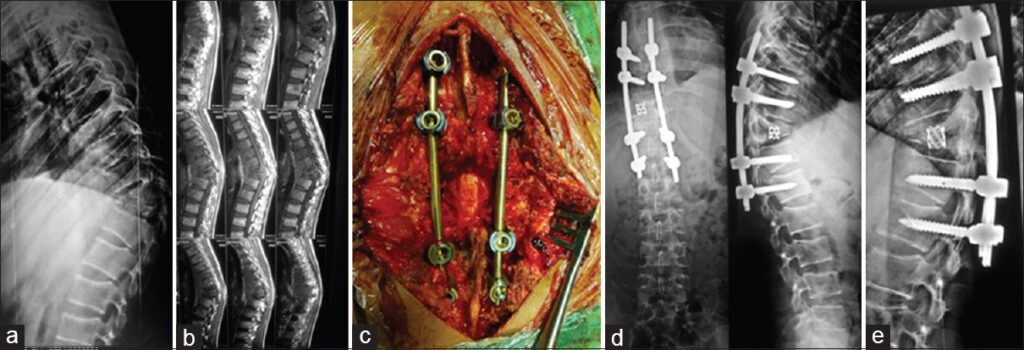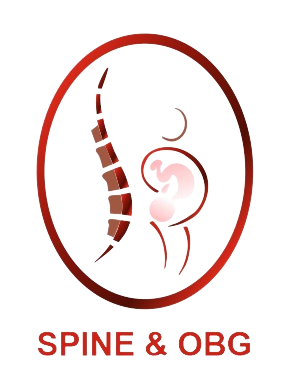
TB Spine Fixation and Fusion
TB Spine Fixation and Fusion
TB spine fixation and fusion is a surgical procedure used to treat spinal tuberculosis, a bacterial infection that affects the spine and surrounding tissues. This procedure involves stabilizing the affected spinal segments and joining the vertebrae to prevent further damage.
During the surgery, hardware such as screws, rods, or plates may be used to immobilize the spine and promote alignment. Additionally, bone graft material may be placed between the vertebrae to facilitate fusion. The goal of TB spine fixation and fusion is to eradicate the infection, alleviate symptoms such as pain and prevent deformity or disability caused by spinal tuberculosis. It is typically performed in conjunction with anti-tuberculosis medication therapy to effectively manage the infection.
Common reasons for undergoing TB spine fixation and fusion include stabilizing the spine and promoting healing in cases of active spinal tuberculosis.
This procedure is also performed to prevent progressive spinal deformity, spinal instability, and associated neurological complications. It helps alleviate severe pain and discomfort that may not respond to conservative treatments and prevents complications such as spinal cord compression or nerve damage. By restoring spinal stability and function, TB spine fixation and fusion aim to improve the patient’s quality of life.
Our Spine Surgeon Dr. Arjun R H H will assess your condition thoroughly before surgery to determine the most suitable course of action.
Minimally invasive spine surgery is typically performed using specialized instruments and techniques that allow the surgeon to access the spine through small incisions.
These procedures often utilize fluoroscopy or other imaging techniques to guide the surgeon’s instruments to the precise location. By minimizing damage to surrounding tissues, muscles, and nerves, this approach aims to reduce pain, scarring, and recovery time for the patient.
The recovery time for TB spine fixation and fusion surgery typically involves a hospital stay of several days to a few weeks for monitoring and initial post-operative care.
Patients may gradually begin physical therapy and rehabilitation during this time to improve mobility and strength. Full recovery can take several months to a year or longer, with gradual improvements in mobility and overall function.
Adhering to post-operative instructions and attending follow-up appointments with DR Arjun R H H are essential for achieving the best outcomes.
Risks of TB spine fixation and fusion include infection, which may occur due to the presence of active tuberculosis or surgical site contamination. Complications such as implant failure, delayed wound healing, or neurological deficits are possible.
Additionally, there is a risk of complications associated with general anesthesia and the surgical procedure itself, including blood loss, nerve injury, or damage to nearby structures.
It’s important to discuss these risks with our surgeon and carefully weigh the potential benefits against the risks before proceeding with surgery.
The benefits of TB spine fixation and fusion include stabilizing the spine to promote healing and prevent further vertebral collapse. This procedure helps alleviate pain and discomfort associated with spinal tuberculosis and prevents progressive deformity.
By restoring spinal stability and function, TB spine fixation and fusion can improve overall quality of life and prevent further spine complications.
Dr. Arjun R. H. H typically evaluates the necessity for TB Spine Fixation and Fusion using a combination of methods, including physical examination, imaging tests such as MRI, and a review of the patient’s medical history.
During the physical examination, Dr. Arjun R H H assesses strength, sensation, reflexes, and symptoms like pain and mobility limitations in the affected area.
Imaging tests, particularly MRI, help pinpoint the location and severity of spinal issues like disc degeneration or instability, and whether they are causing nerve compression. Based on these evaluations, Dr. Arjun H H determines if TB Spine Fixation and Fusion is the suitable treatment option for the patient’s condition.
The typical duration of TB spine fixation and fusion surgery varies depending on factors such as the extent of spinal involvement and the complexity of the procedure. Generally, the surgery ranges from 4 to hours, with additional time required for pre-operative preparation and post-operative monitoring.
However, the exact duration can be influenced by individual patient factors and any unforeseen complications that may arise during the procedure.
The duration of hospital stay following TB spine fixation and fusion surgery typically ranges from several days to a few weeks, depending on factors such as the extent of spinal involvement, the patient’s overall health, and post-operative recovery progress.
Close monitoring for complications and adequate pain management are important during this time, and doctor may begin physical therapy and rehabilitation process for patients as part of recovery plan.
Once stable, patients may be discharged home with instructions for spine care, pain management, and activity restrictions.
After TB spine fixation and fusion surgery, maintaining a healthy spine involves a combination of medications, exercises, and lifestyle modifications.
For a safe and effective recovery, Dr Arjun R H H will prescribes medications to manage pain and inflammation during the recovery period.
Additionally, Doctor will recommend specific exercises to strengthen the muscles supporting the spine and improve flexibility. Depending on the patient’s overall condition and specific surgical outcome, the doctor may provide personalized recommendations . For more information and guidance, it’s advisable to consult Spine Surgeon Dr. Arjun R H H.
Views: 3
